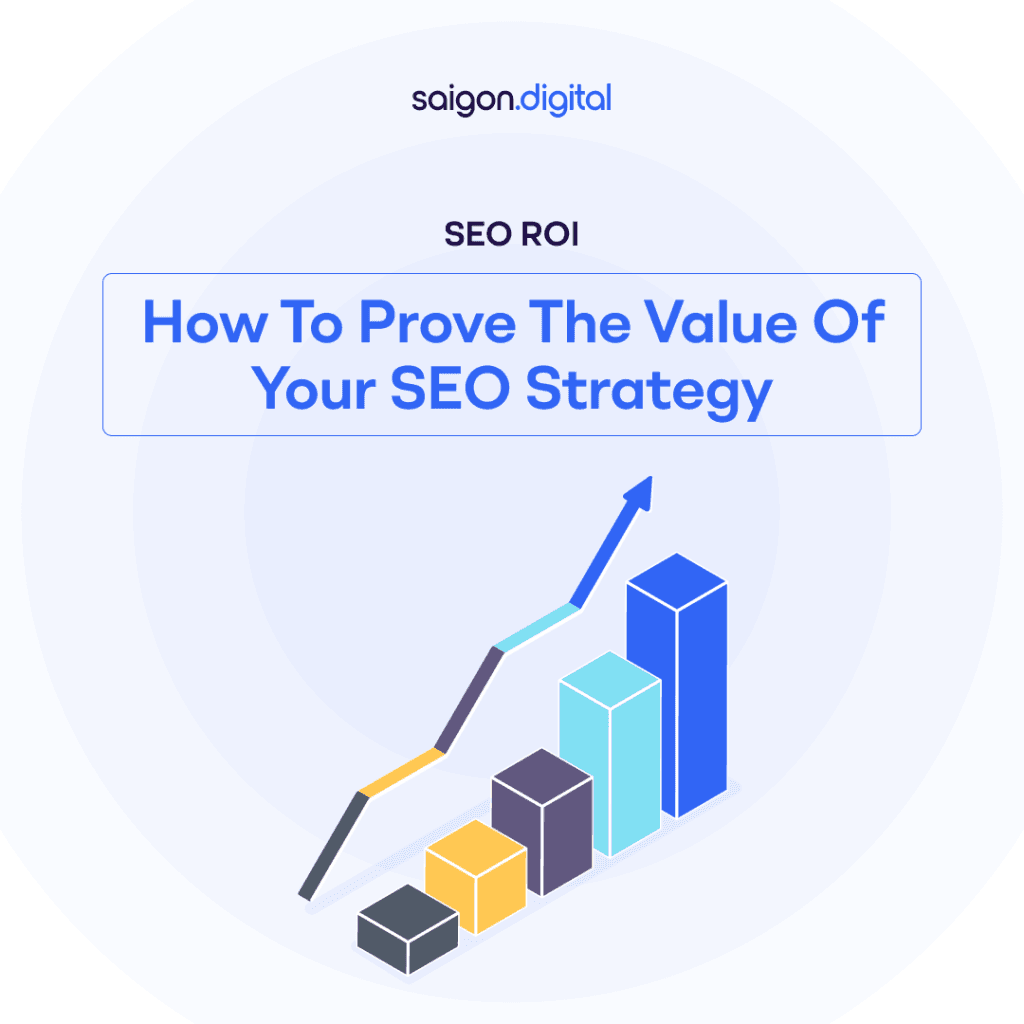
What is ROI in SEO?
SEO ROI (Return on Investment) is essentially the revenue generated from SEO efforts compared to the cost of those efforts. The formula itself is straightforward: SEO ROI = (Revenue from SEO - Cost of SEO) / Cost of SEO × 100 While this equation looks simple on paper, the real challenge is accurately measuring revenue directly tied to SEO. Organic traffic can influence multiple touchpoints in a customer’s journey, making attribution a bit tricky. This is why a multi-faceted approach to tracking and analysing SEO performance is essential.Metrics for Evaluating SEO Results
To accurately measure the success of an SEO campaign, you need to track specific metrics that indicate growth, engagement, and conversions. Here are some key metrics to evaluate your SEO performance:1. Organic Traffic
Organic traffic is the most fundamental metric, which shows how many visitors land on your website via unpaid search results. A steady increase in organic traffic is a strong indicator that your SEO efforts are working. Tools like Google Analytics and Google Search Console can help you track the volume and quality of organic visitors over time.2. Keyword Rankings
Keyword , in the context of SEO, is a word or phrase that people use when searching for information on search engines like Google. Tracking keyword positions is essential for understanding how well your content is ranking in search engine results pages (SERPs). A rise in rankings for high-value keywords typically leads to increased organic traffic and, ultimately, conversions. Tools like Ahrefs, SEMrush, and Google Search Console provide keyword ranking insights.
3. Click-Through Rate (CTR)
CTR measures the percentage of users who click on your site after seeing it in search results. A low CTR despite high rankings suggests that your meta titles and descriptions need improvement. Optimising these elements with compelling and relevant messaging can significantly boost your CTR.4. Bounce Rate & Dwell Time
Bounce rate refers to the percentage of users who leave your site after viewing only one page, while dwell time measures how long they stay. A high bounce rate combined with low dwell time may indicate that your content isn’t engaging or relevant to users' queries. Improving content quality and page experience can help retain visitors longer.5. Conversion Rate From Organic Traffic
Ultimately, conversions matter more than just traffic. Whether it’s sales, sign-ups, or downloads, tracking how many organic visitors take desired actions on your site is crucial for proving SEO ROI. Google Analytics allows you to track goal completions and eCommerce transactions tied to organic traffic.6. Backlink Profile
The number of quality backlinks pointing to your site influence your domain authority and search rankings. A growing backlink profile from reputable websites signals trustworthiness to search engines, improving your chances of ranking higher.7. Page Load Speed & Core Web Vitals
Page speed is a ranking factor that affects both user experience and SEO performance. Google’s Core Web Vitals metrics—such as Largest Contentful Paint (LCP) and First Input Delay (FID)—help measure how fast and responsive your website is. Faster-loading pages tend to rank better and retain more visitors.How to Track SEO Revenue Accurately
To prove the value of your SEO strategy, you need reliable data. That means using analytics tools to connect the dots between organic search and conversions. Here’s how you can do it:Set Up Google Analytics (GA4) Properly
If you haven’t configured GA4 correctly, you’re already starting on the wrong foot. Google Analytics 4 (GA4) is the latest version of Google's analytics platform, designed to provide a more comprehensive and flexible way to measure user interactions across websites and apps. Make sure you’re tracking organic traffic, goal completions, and eCommerce transactions. Setting up event tracking allows you to see how organic visitors interact with your site, helping you understand their path to conversion. For example, if you run an online clothing store, GA4 can show you that users who land on your blog post about “best summer dresses” often navigate to your product pages before purchasing. By tracking these pathways, you can optimise your internal linking strategy and calls-to-action (CTAs) to drive even higher conversions.Use Google Search Console for Keyword Insights
Similar to GA4, Google Search Console (GSC) is a free service provided by Google to provide invaluable insights into how users find your site. Tracking clicks, impressions, and average positions can help you understand whether your SEO efforts are moving the needle. If your rankings improve, but traffic and conversions don’t, it may be time to reassess your content strategy or on-page optimisations. Suppose your website ranks #3 for “best running shoes UK” and generates 5,000 impressions per month but only 200 clicks. This indicates a click-through rate (CTR) of 4%, which is below average for top-ranking positions. You could experiment with improving your meta titles and descriptions to make them more enticing, thereby increasing your CTR and overall organic traffic.
Attribute Revenue to Organic Traffic in Google Analytics
If you’re running an eCommerce site, linking organic sessions to actual sales is relatively simple. For service-based businesses, they could track form submissions, phone calls, or other key conversion actions. Whenever possible, assign a monetary value to these actions, this gives you a concrete figure to showcase SEO’s impact. Take a law firm, for instance. If they generate an average of £2,000 per client and their website converts 10 organic leads per month, SEO is responsible for £20,000 in potential revenue. Even if they’re investing £3,000 per month in SEO, their ROI is significantly positive.Track Assisted Conversions
SEO doesn’t always lead to immediate conversions. Many users will discover your site through a Google search but return later via direct traffic, social media, or even paid ads. Google Analytics’ Assisted Conversions report helps you understand how organic search plays a role in the bigger picture. For instance, a furniture store might see that 70% of customers who purchase a £500 sofa first visited their site through organic search but later returned via a remarketing ad. Without tracking assisted conversions, SEO’s contribution to revenue would be vastly underestimated.Forecasting ROI for SEO
Now that you understand how to track SEO, let’s look at how you can forecast future ROI for SEO. Knowing what kind of return you can expect from SEO is really valuable. It helps you decide where to put your resources, what to focus on, and how to fine-tune your strategy along the way. In order to predict SEO ROI, it’s common to estimate common SEO metrics like:- Search volume
- Website traffic
- Click-through-rate (CTR)
- Return on investment (ROI)
- Historical data that you have from tracking your website through tools such as Google Analytics and Google Search Console.
- External data that comes from tools like Semrush or Ahrefs that provides information on trends and competitors
Estimate Website Performance
If you need a quick, rough idea of your SEO's potential, looking at your past website data is a straightforward approach. This works best if you're planning to stick with your current SEO strategy. Here's how you can do it, using a tool like Google Analytics:- First, pull up your total organic search traffic for the last 12 months.
- Then, compare that number to the traffic you had the year before.
- The difference between those two numbers can give you a basic idea of what to expect next year.
Forecast Keyword Search Volume
If you're gearing up to create a bunch of new content around a specific set of keywords, relying solely on your past traffic data won't give you the full picture. You'll need to figure out how much search volume those keywords actually have. This is where SEO tools come in handy such as Semrush or Ahrefs. You can plug in your target keywords and see the estimated monthly search volume for each. Tally up those numbers to get a sense of the total potential search volume for your keyword cluster. Next, you'll want to use a search analytics tool to find your website's average CTR, Google Analytics and/or Google Search Console can be used. Multiply that percentage by the total estimated search volume, and you'll have a projection of the website traffic you can expect. For instance, let's say your keyword research suggests a total search volume of 75,000 searches per month, and your average CTR is around 8%. That means you could potentially see about 6,000 clicks from search. To take it a step further, you can estimate your potential conversions by multiplying that predicted website traffic by your average conversion rate. So, if your conversion rate is, say, 4%, you could anticipate roughly 240 conversions from those 6,000 visitors.The Long-Term Value of SEO
One of the biggest mistakes businesses make is expecting SEO to deliver instant results. Unlike PPC, which drives immediate traffic, SEO is a long-term investment. But here’s the kicker, its effects compound over time, meaning your cost per acquisition (CPA) decreases as organic visibility grows. Consider this: If a single blog post ranks well for a high-intent keyword, it can drive traffic and leads for months, even years, without ongoing ad spend. Compare that to a PPC campaign, where traffic disappears the moment you stop paying, and the long-term benefits of SEO become abundantly clear.Demonstrating SEO ROI to Stakeholders
Getting buy-in from decision makers requires more than just numbers, it’s about telling a compelling story. Here’s how you can present your SEO ROI effectively:- Show before-and-after data: Highlight increases in organic traffic, keyword rankings, and conversions. A simple graph showing the growth over six to twelve months can be incredibly persuasive.
- Compare SEO to other channels: If paid ads are generating leads at £50 per acquisition, but SEO delivers them at £10, the argument for continued investment is clear.
- Case studies & competitor analysis: Show how competitors who invest in SEO are outranking and outperforming businesses that ignore it. If a direct competitor is reaping the benefits of strong organic visibility, it’s a wake-up call for any hesitant stakeholders.





